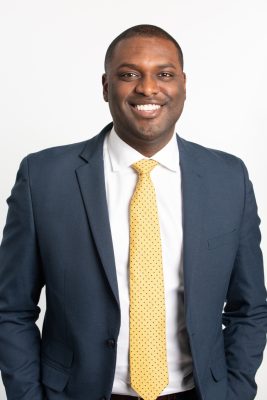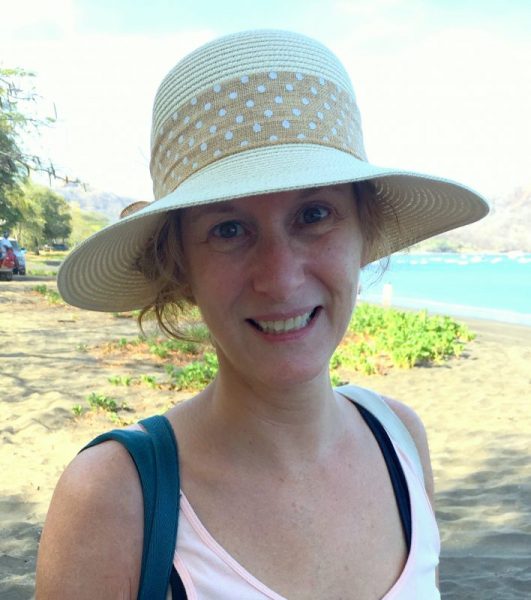Changes in Representation Loom as State Approves Redistricting
News Article Article pages that do not meet specifications for other Trust Project Type of Work labels and also do not fit within the general news category.

Gov. Kathy Hochul signed New York’s redistricting into law late last week after both houses of the state legislature completed new lines for Assembly, Senate and congressional districts.
Its greatest impact locally will present itself in significant changes to the congressional district lines. Despite seeing the state’s population exceed 20 million, the highest count in its history, New York will lose one of its 27 congressional seats because other states had proportionately larger gains.
As a result, Congressman Mondaire Jones’ 17th District will now include nine towns and one city in Orange County and all of Sullivan County. Rockland County is still in Jones’ district but he will no longer represent most of northern Westchester, including Peekskill and Cortlandt, which will become part of the 18th District, not represented by Sean Patrick Maloney. Jones will continue to represent a piece of White Plains, Greenburgh, Ossining, Mount Pleasant, New Castle and Mount Kisco.
Maloney currently represents all of Orange and Putnam counties and pieces of Westchester and Dutchess. The new district he will run for relinquishes about half of Orange to the 17th District and loses parts of Putnam and Westchester to the 16th Congressional District represented by Congressman Jamaal Bowman.
Bowman retains a section of the Bronx, but now extends northward to include a portion of White Plains, North Castle, Bedford, Yorktown and Somers in Westchester and Putnam Valley and Carmel in Putnam County.
It’s been speculated the New York congressional seat that will disappear is the 22nd District, held by Republican Claudia Tenney.
Last week, a lawsuit was filed by a group of Republican voters alleging Democrats gerrymandered the districts. The suit was filed in the state Supreme Court in Steuben County against Hochul, Democratic lawmakers, the state Board of Elections and the redistricting commission.
“New York Democrats are so drunk on their own power that they feel comfortable enough to brazenly undermine the will of the voters who twice voted to take map-drawing out of the hands of politicians,” said state Republican Chairman Nick Langworthy. “Their plan all along has been to subvert the independent process and rig themselves into permanent power. If allowed to stand, these lines will draw a stake through the heart of democracy and put their one-party supermajority rule on steroids, albeit ensuring New York’s total and permanent destruction.”
The once-a-decade redistricting adjust districts based on the 2020 Census and New York’s population is officially 20,193,858. The Census showed a 4.2 percent population gain in New York from 2010.
The maps also reflect a population shift from rural areas upstate to downstate cities and counties.
Westchester and Putnam counties saw some Senate and Assembly districts change.
Senate Majority Leader Andrea Stewart-Cousins’ (D-Yonkers) district now stretches further northeast from Yonkers to include Mount Pleasant, New Castle and Mount Kisco. Her district will no longer include White Plains, New Rochelle or Scarsdale. Scarsdale will now be in Sen. Shelley Mayer’s (D-Yonkers) district.
Sen. Peter Harckham (D-Lewisboro) will lose the Dutchess County portion of his currently named 40th Senate District, where he represented voters in the Town of Beekman and the Town and Village of Pawling. The new district will run from the northern border of Putnam County southward to include part of White Plains, which he will share with Mayer. Cut out of Harckham’s district is Mount Pleasant and New Castle but he will pick up the towns North Castle and Bedford from Mayer. The district will cover all of Putnam County except Philipstown.
There was no substantive change in Sen. Elijah Reichlin-Melnick’s district. Reichlin-Melnick (D-Nyack) will still represent most of Rockland County and Ossining and Briarcliff Manor in Westchester.
Assemblyman Tom Abinanti (D-Pleasantville) will lose Edgemont in the Town of Greenburgh, but would now represent a piece of northern Yonkers. His district will still include all of Mount Pleasant and most of Greenburgh.
“The population growth in Yonkers required that my district move south,” Abinanti said. “My district had to shed voters somewhere and those drawing the maps concluded the Edgemont section was a cohesive area that could be moved to another district where it shared a community of interest.”
Abinanti is up for re-election in November and will be challenged by Westchester County Legislator MaryJane Shimsky in the June Democratic primary.
Edgemont would be served by Assemblywoman Amy Paulin (D-Scarsdale). Her district includes Eastchester, Bronxville, Tuckahoe, Pelham, Pelham Manor, Scarsdale and parts of New Rochelle. Her portion of White Plains has been reduced.
Assemblyman Chris Burdick’s (D-Bedford) district will add part of White Plains. His district will continue to include Bedford, Mount Kisco, New Castle, North Castle and Harrison along with the communities in the northeastern corner of Westchester.
Assemblyman Kevin Byrne’s 94th District has included portions of Putnam and northern Westchester counties. The new district will include Somers and about half of Yorktown and all of Putnam except for Philipstown. The Town of Yorktown will be shared with retiring Assemblywoman Sandy Galef’s successor.
Byrne said he was vehemently opposed to the redistricting process.
“In 2013, a lot of people ran on independent redistricting to ban gerrymandering and here we go again,” he said. “I opposed gerrymandering and stood by my word and voted no against all the maps. The people of New York supported a constitutional amendment for independent districting and the process utterly failed.”
Byrne, who is running for Putnam County Executive later this year, blamed the Democratic commissioners serving on the New York State Independent Redistricting Commission with purposely stonewalling so new maps would be kicked back to the Democratic-controlled legislature for partisan support.
“You have firm rules and guidelines that you follow and make sure you’re not splitting towns and communities,” he said. “This was done very politically with the partisan benefit to the majority members in Congress and the state.”
New York’s state constitution was amended in 2014 to ban gerrymandering.
The Independent Redistricting Commission held numerous public hearings last summer and fall that produced thousands of pages of submitted testimony from New Yorkers supporting keeping communities of interest together.
David Imamura, chair of the New York State Independent Redistricting Commission, said he was very pleased with the redistricting process.
“The legislature has drawn great lines that reflect the public input to the commission, especially voters from Westchester,” Imamura said.

Abby is a seasoned journalist who has been covering news and feature stories in the region for decades. Since The Examiner’s launch in 2007, she has reported extensively on a broad range of community issues. Read more from Abby’s editor-author bio here. Read Abbys’s archived work here: https://www.theexaminernews.com/author/ab-lub2019/
